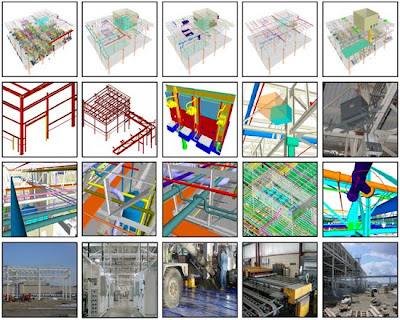ParsCo Building information modeling (BIM) technology experts
December 30, 2012ParsCo is an experienced expert in the use of Building information modeling (BIM) technology.
ParsCo uses this process involving the generation and management of digital representations of physical and functional characteristics of a facility.
In 2012, ParsCo completed the BIM scope for new Auburn University facilities successfully which resulted in the BIM models being used to support decision-making about the facilities from earliest conceptual stages, through design and construction, and eventually through its operational life.
ParsCo’s Management of Building Information Models (BIM)
Building Information Models span the whole concept-to-occupation time-span. To ensure efficient management of information processes throughout this span, a ParsCo BIM manager should be appointed. The BIM manager is retained by a design build team on the client’s behalf from the pre-design phase onwards to develop and to track the object-oriented BIM against predicted and measured performance objectives, supporting multi-disciplinary building information models that drive analysis, schedules, take-off and logistics.
ParsCo’s use of BIM in construction management
Participants in the building process are constantly challenged to deliver successful projects despite tight budgets, limited manpower, accelerated schedules, and limited or conflicting information. The BIM concept envisages virtual construction of a facility prior to its actual physical construction, in order to reduce uncertainty, improve safety, work out problems, and simulate and analyze potential impacts. Sub-contractors from every trade can input critical information into the model before beginning construction, with opportunities to pre-fabricate or pre-assemble some systems off-site. Waste can be minimised on-site and products delivered on a just-in-time basis rather than being stock-piled on-site.
Quantities and shared properties of materials can be extracted easily. Scopes of work can be isolated and defined. Systems, assemblies and sequences can be shown in a relative scale with the entire facility or group of facilities. BIM also prevents errors by enabling conflict or ‘clash detection’ whereby the computer model visually highlights to the team where parts of the building (e.g.: structural frame and building services pipes or ducts) may wrongly intersect.
1. Better outcomes through collaboration
All project partners – different design disciplines, the customer, contractor, specialists and suppliers – use a single, shared 3D model, cultivating collaborative working relationships. This ensures everyone is focused on achieving best value, from project inception to eventual decommissioning.
2. Enhanced performance
BIM makes possible swift and accurate comparison of different design options, enabling development of more efficient, cost-effective and sustainable solutions.
3. Optimised solutions
Through deployment of new generative modelling technologies, solutions can be cost-effectively optimised against agreed parameters.
4. Greater predictability
Projects can be visualised at an early stage, giving owners and operators a clear idea of design intent and allowing them to modify the design to achieve the outcomes they want. In advance of construction, BIM also enables the project team to ‘build’ the project in a virtual environment, rehearsing complex procedures, optimising temporary works designs and planning procurement of materials, equipment and manpower.
5. Faster project delivery
Time savings, up to 50%, can be achieved by agreeing the design concept early in project development to eliminate late stage design changes; using standard design elements when practicable; resolving complex construction details before the project goes on site; avoiding clashes; taking advantage of intelligence and automation within the model to check design integrity and estimate quantities; producing fabrication and construction drawings from the model; and using data to control construction equipment.
6. Reduced safety risk
Crowd behaviour and fire modelling capability enable designs to be optimised for public safety. Asset managers can use the 3D model to enhance operational safety. Contractors can minimise construction risks by reviewing complex details or procedures before going on site.
7. Fits first time
Integrating multidisciplinary design inputs using a single 3D model allows interface issues to be identified and resolved in advance of construction, eliminating the cost and time impacts of redesign. The model also enables new and existing assets to be integrated seamlessly.
8. Reduced waste
Exact quantity take-offs mean that materials are not over-ordered. Precise programme scheduling enables just-in-time delivery of materials and equipment, reducing potential for damage. Use of BIM for automated fabrication of equipment and components enables more efficient materials handling and waste recovery.
9. Whole life asset management
BIM models contain product information that assists with commissioning, operation and maintenance activities – for example sequences for start-up and shut-down, interactive 3D diagrams showing how to take apart and reassemble equipment items and specifications allowing replacement parts to be ordered.
10. Continual improvement
Members of the project team can feed back information about the performance of processes and items of equipment, driving improvements on subsequent projects.
Construction Management
This entry was posted in Uncategorized. Bookmark the permalink.

 Expand Navigation
Expand Navigation






Leave a Reply